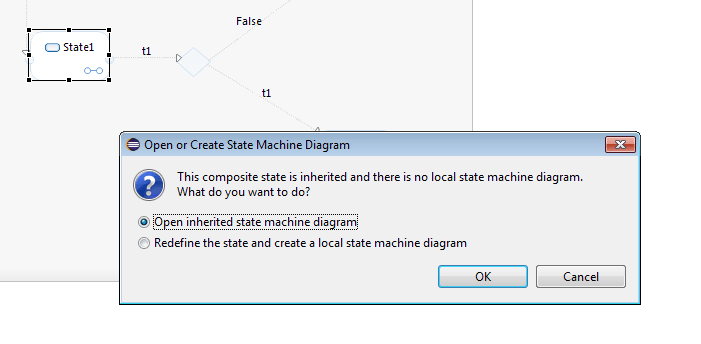Hi,
I checked the video regarding redefining transitions. Regarding the placement of the redefinition icon, I think we shall align with the legacy tooling and place it at the target end of the transition, and not centered as shown in the video, in the corresponding was as the icons of guard/effect is placed at the source end of the transition.
Maybe the same principle with a "fixed" position as Rémi did for those icons. I can see in the legacy tooling that the redefinition icon "moves around" and are placed differently depending on the length of the transition, sometimes even placed on top of the arrow itself. We had the same issue initially with the trigger warning/guard/effect icons. I guess Rémi can provide some guidance on how he did the "fixed" placement of those icons, and I suggest we do the same for the redefinition icon.
And since we are talking about the icons for the guard and effect, I can point out that the legacy tooling have the same kind of "washed out" principle also for these icons, i.e. if you have an inherited transition with some effect (and possibly guard) code, then those icons are also washed out. If you now redefine the effect or guard code, then the corresponding icon becomes normal to indicate that the effect/guard have been redefined. This will also be applicable for the code snippet view, where the icons on the tabs for effect and guard code will use the same "washed out" principle when showing the inherited (but not yet redefined) effect or guard code.
When you have a transition with redefined effect or guard code, and you right-click on the transition in the diagram, you have separate "Reinherit"-menu choices for reinheriting the effect and guard code. So you could redefine the transition, e.g. by reorienting it, redefine the effect and/or guard code, but then only reinherit the effect and /or guard code separately. When reinheriting the transition itself, the effect and guard code is implicitly also reinherited.
/Peter Cigéhn

